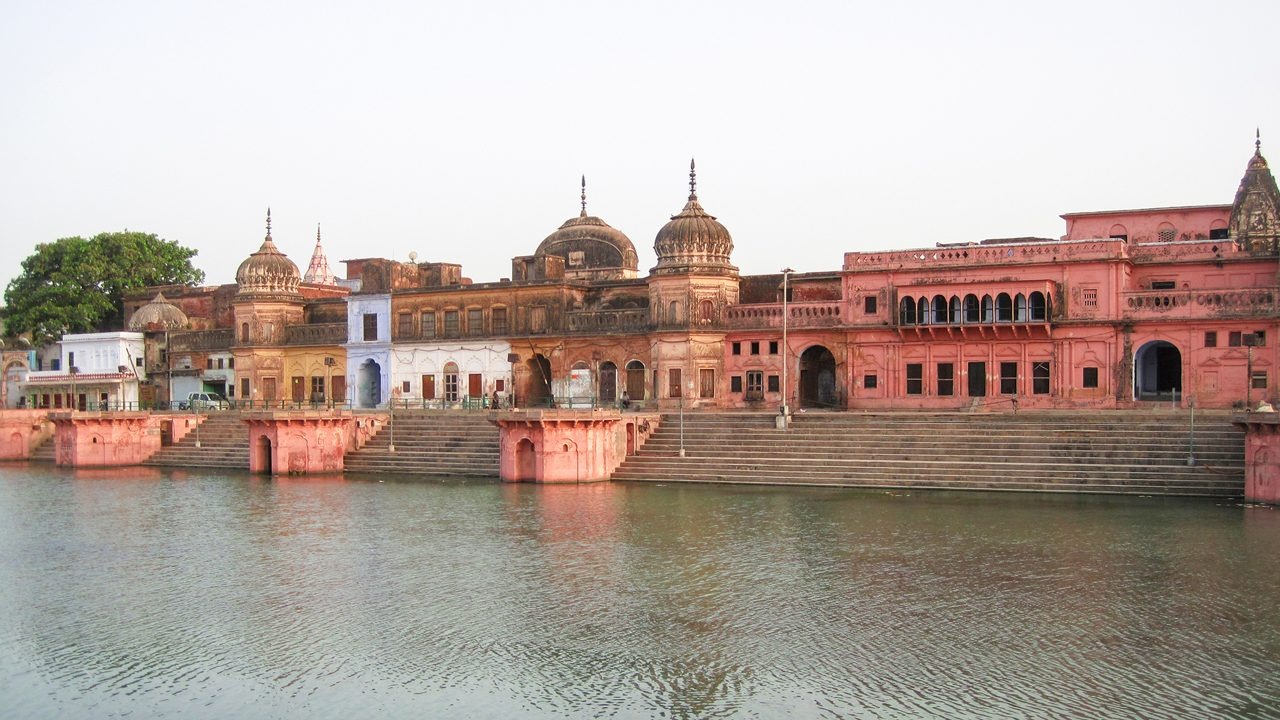
Ayodhya, the birthplace of Lord Rama, is one of the most sacred cities in India. Located in Uttar Pradesh, this ancient city is an important pilgrimage site for Hindus and a place filled with rich history and culture. If you’re planning a trip, here are the best places to visit in Ayodhya that you should not miss.
1. Ram Janmabhoomi
The Ram Janmabhoomi is the most famous place in Ayodhya. It is believed to be the birthplace of Lord Rama, and it attracts millions of devotees every year. The grand Ram Temple is under construction, making it a must-visit site for spiritual seekers.
2. Hanuman Garhi
One of the most visited temples in Ayodhya, Hanuman Garhi, is dedicated to Lord Hanuman. This 10th-century temple is located on a hill, and visitors need to climb 76 steps to reach the top. The temple is believed to protect the city from evil spirits and is an important site for Hanuman devotees.
3. Kanak Bhawan
Kanak Bhawan is a beautiful temple dedicated to Lord Rama and Goddess Sita. This temple is known for its intricate carvings and stunning golden idols of the deities. It is said that this palace was gifted to Goddess Sita by her mother-in-law, Queen Kaikeyi, after her marriage to Lord Rama.
4. Treta Ke Thakur
The Treta Ke Thakur Temple is an ancient temple that is believed to be built at the place where Lord Rama performed the Ashwamedha Yagna. The temple houses black stone idols of Lord Rama, Sita, Lakshmana, Bharat, and Shatrughna.
5. Nageshwarnath Temple
The Nageshwarnath Temple is dedicated to Lord Shiva and is an important place of worship in Ayodhya. According to legend, this temple was built by Kush, the son of Lord Rama. It is especially crowded during the festival of Mahashivaratri.
6. Guptar Ghat
If you love peaceful and scenic spots, Guptar Ghat is a perfect place to visit in Ayodhya. It is believed that Lord Rama took Jal Samadhi (water burial) at this very place. The ghat is located along the banks of the Sarayu River, making it an ideal place for meditation and relaxation.
7. Sita Ki Rasoi
Sita Ki Rasoi is an ancient kitchen-turned-temple that represents the place where Goddess Sita cooked meals for her family after marriage. The temple symbolizes love and devotion and is a must-visit for devotees who want to experience the simplicity of divine life.
8. Mani Parbat and Sugriv Parbat
These two small hills, Mani Parbat and Sugriv Parbat, are believed to have mythological significance. Mani Parbat is said to have a stupa built by Emperor Ashoka, while Sugriv Parbat is linked to the Ramayana epic.
9. Tulsi Smarak Bhawan
The Tulsi Smarak Bhawan is dedicated to the great poet Tulsidas, who wrote the epic Ramcharitmanas. This place has a library, museum, and a research center that showcases the poet’s life and his contribution to Hindu literature.
10. Ramkatha Park
Ramkatha Park is a well-maintained garden where cultural and religious events are held. The park hosts Ramayana-themed plays, devotional music programs, and folk performances. It is a great place for visitors to relax and enjoy Ayodhya’s cultural heritage.
Best Time to Visit Ayodhya
The best time to visit Ayodhya is during the winter months, from October to March, when the weather is pleasant. Festivals like Diwali, Ram Navami, and Dussehra are celebrated grandly in Ayodhya, making it a wonderful time for tourists.
How to Reach Ayodhya
-
By Air: The nearest airport is Maharishi Valmiki International Airport in Ayodhya.
-
By Train: Ayodhya has a well-connected railway station.
-
By Road: Regular buses and taxis connect Ayodhya to major cities like Lucknow, Varanasi, and Delhi.
Conclusion
Ayodhya is not just a religious destination but also a place rich in history, culture, and architectural beauty. Whether you are a devotee or a traveler looking to explore India’s spiritual heritage, these places to visit in Ayodhya will leave you mesmerized. Plan your trip to Ayodhya and experience the divine aura of this ancient city.
For more historical insights on Ayodhya, visit the Wikipedia page on Ayodhya.




Leave a Reply